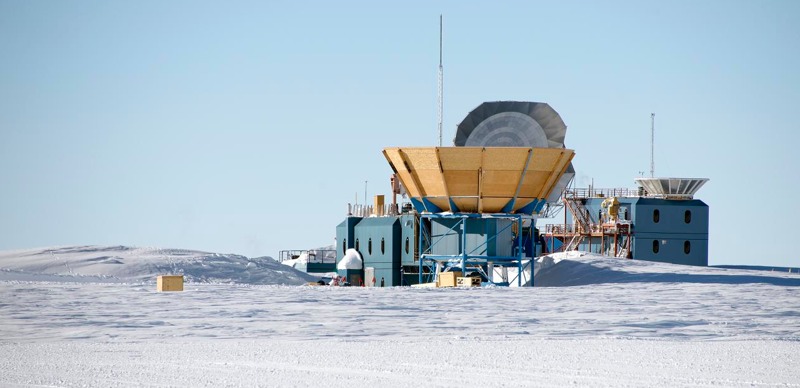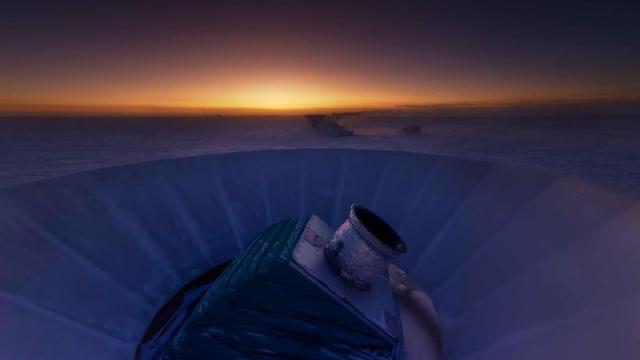Back in 2014, physicists on a collaboration known as BICEP2 thought they had detected gravitational waves. Those claims quickly evaporated when it became clear that they had really seen patterns from cosmic dust. But they haven’t given up the hunt. An upgraded version of the experiment, BICEP3, began taking new data at the South Pole this week, in hopes of succeeding where its earlier incarnation failed.
Along with the Planck satellite mission, the BICEP collaboration was designed to hunt for a specific type of gravitational wave — not those produced by merging binary black holes, as LIGO just detected, but the imprints left by primordial gravitational waves in the cosmic microwave background radiation (the afterglow of the Big Bang). These would have been created by the sudden rapid expansion of the universe right after the Big Bang, a period known as inflation. As Gizmodo reported at the time:
[S]cientists using data from the BICEP2 telescope in Antarctica said they found a pattern called “B-mode polarization” in the cosmic microwave background, which is radiation left over from the formation of the universe. These swirls matched the patterns thought to be made by primordial gravitational waves, which had been predicted but never seen before.
The BICEP2 team announced its findings with great fanfare — prematurely, as it turned out. But there could still be faint traces lurking in the background radiation, and BICEP3 might just be able to find it. The instrument has been upgraded with extra detectors and a new camera with a lot more pixels, making it ten times more powerful than BICEP2. BICEP3 has also partnered with the Keck Array, another South Pole telescope that targets complementary wavelengths in the critical microwave regime.

The Keck Array. Credit: Christopher Michel/Flickr.
“Almost all if not all of the BICEP2 signal can be attributed to dust,” Zeeshan Ahmed, a SLAC physicist who is heading the new operation told Symmetry magazine. But he added that he is optimistic about BICEP3’s chances. “It turns out the more [wavelengths] you have, the better you can disentangle the CMB signal from the dust signal.” As Matthew Francis writes at Symmetry:
The type of dust in the Milky Way that BICEP2 saw appears to be simple, meaning that it polarizes light in some wavelengths more than others in a predictable way. The polarization from gravitational waves could peek out in wavelengths where the dust is less pronounced. Only by scanning across a range of wavelengths can researchers find the exact behaviour of galactic dust across the microwave spectrum, in hopes of subtracting it away. Once that is done properly, what’s left may be gravitational waves from inflation.
The current data run won’t be over until November, and there will be months of analysis after that. After what happened in 2014, the collaboration will most certainly be triple and quadruple checking the analysis before making any kind of announcement. It could be that even with the upgrades, the patterns they’re looking for are just too small and faint for detection. But here’s hoping the third time’s charm for BICEP physicists.
[Symmetry]
Top image: Steffen Richter/Symmetry
